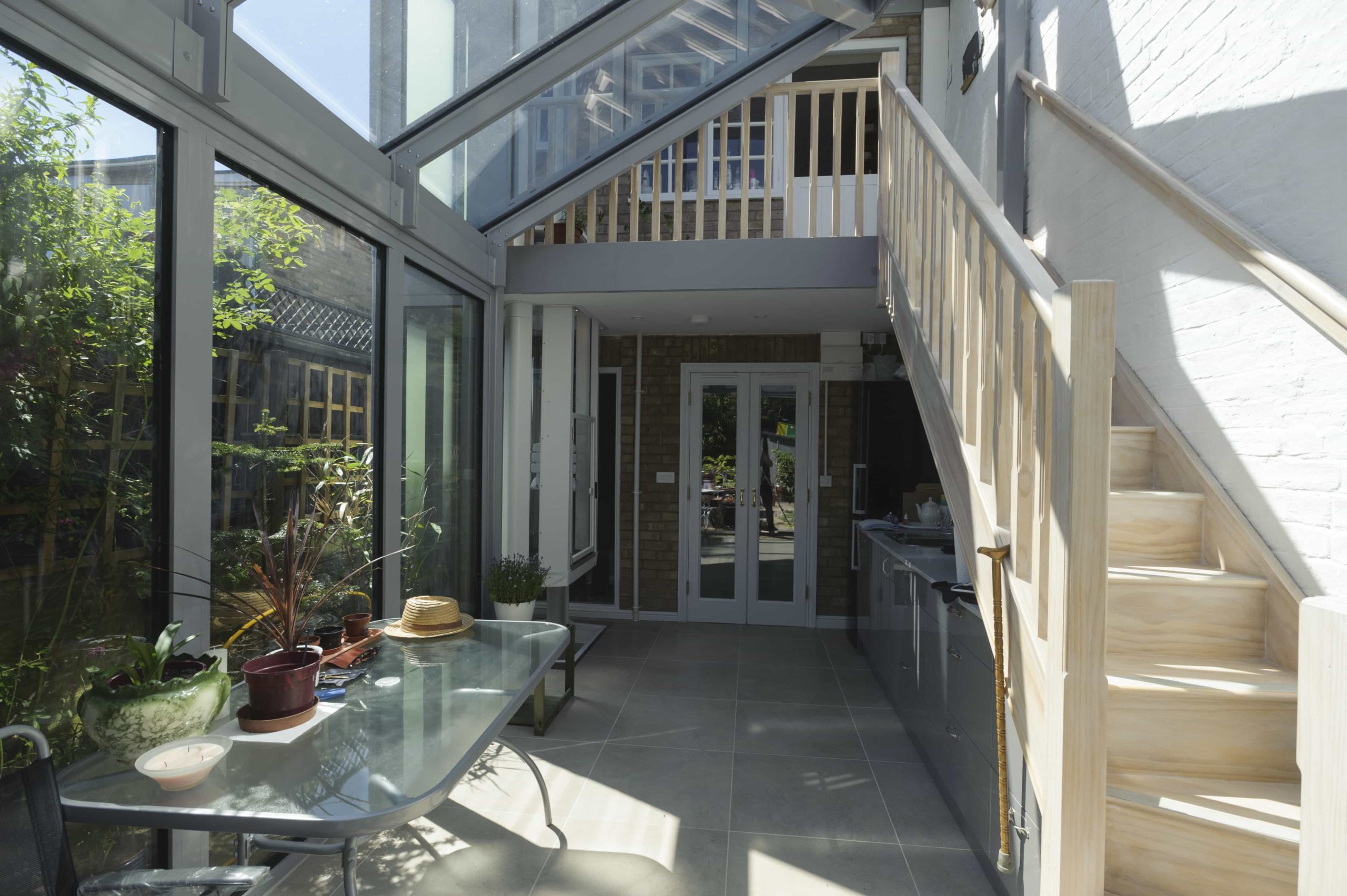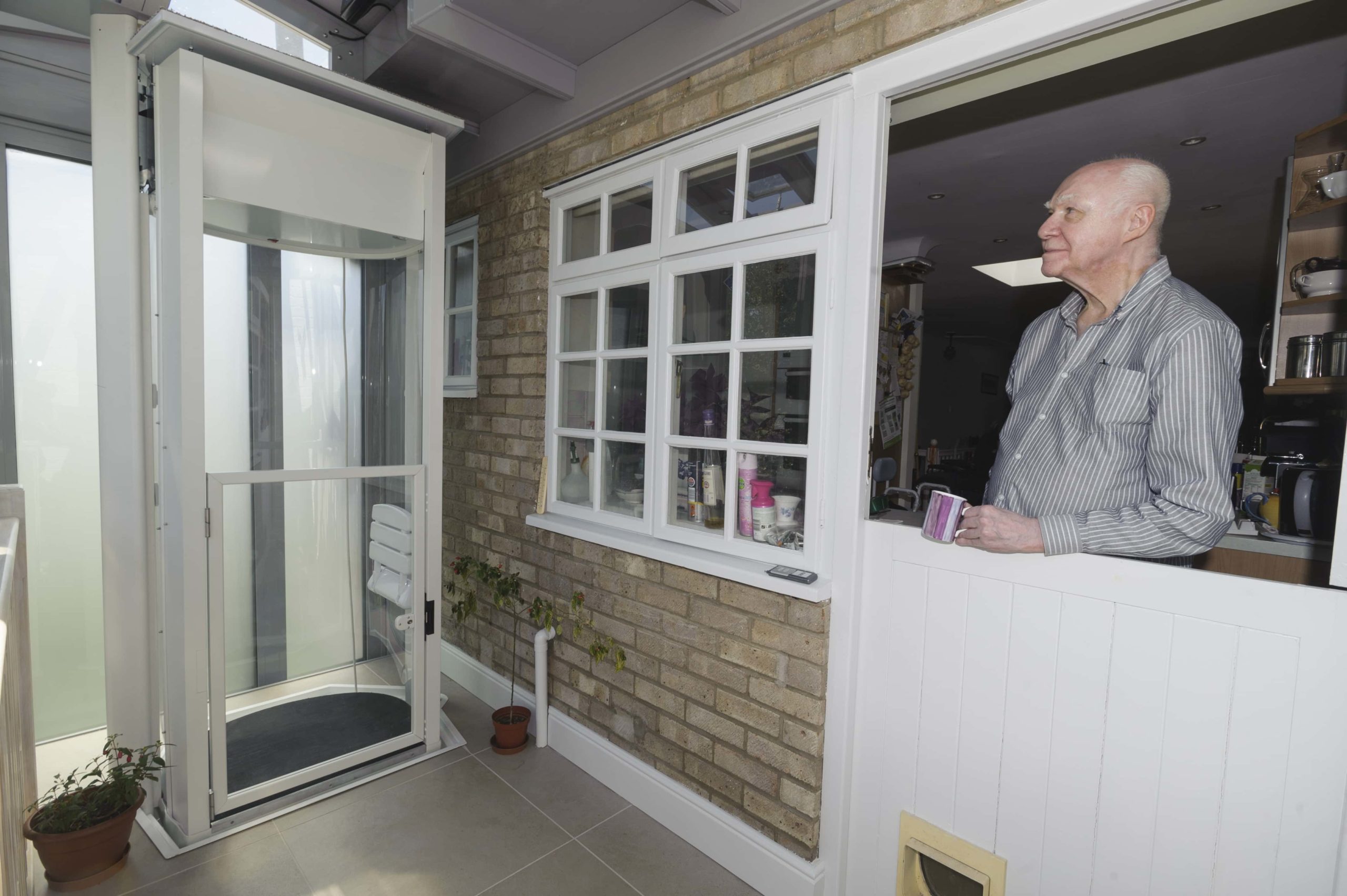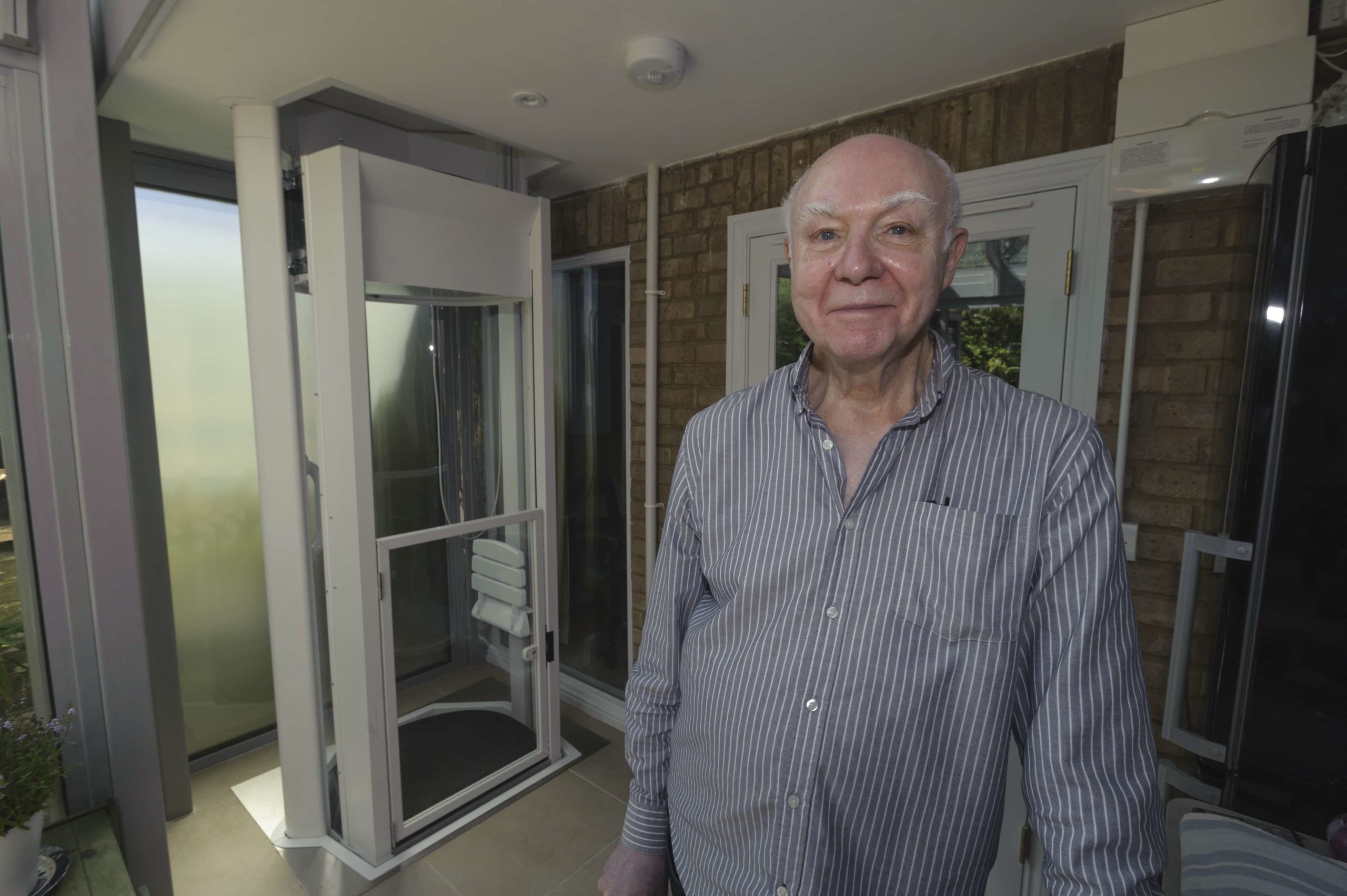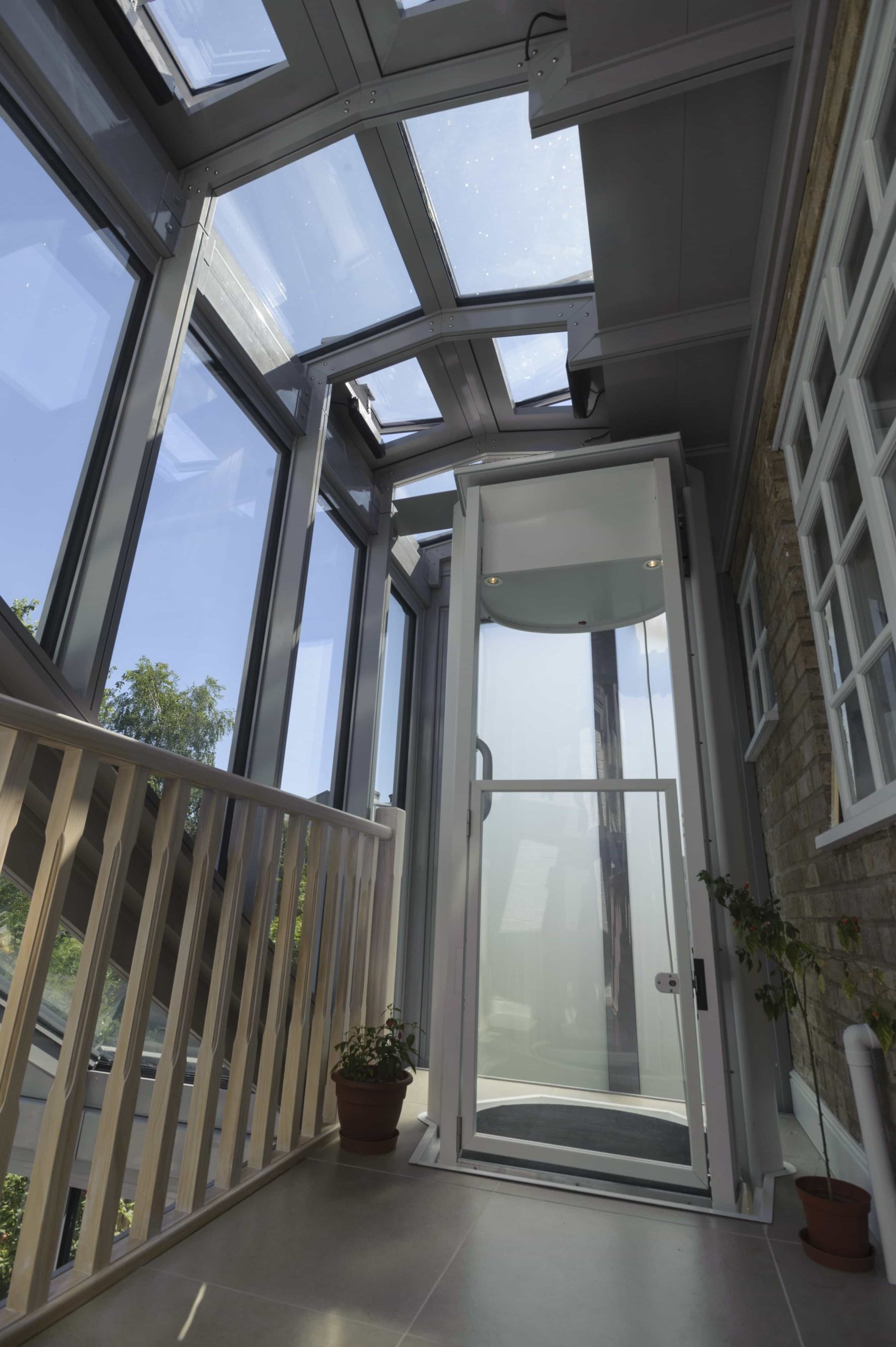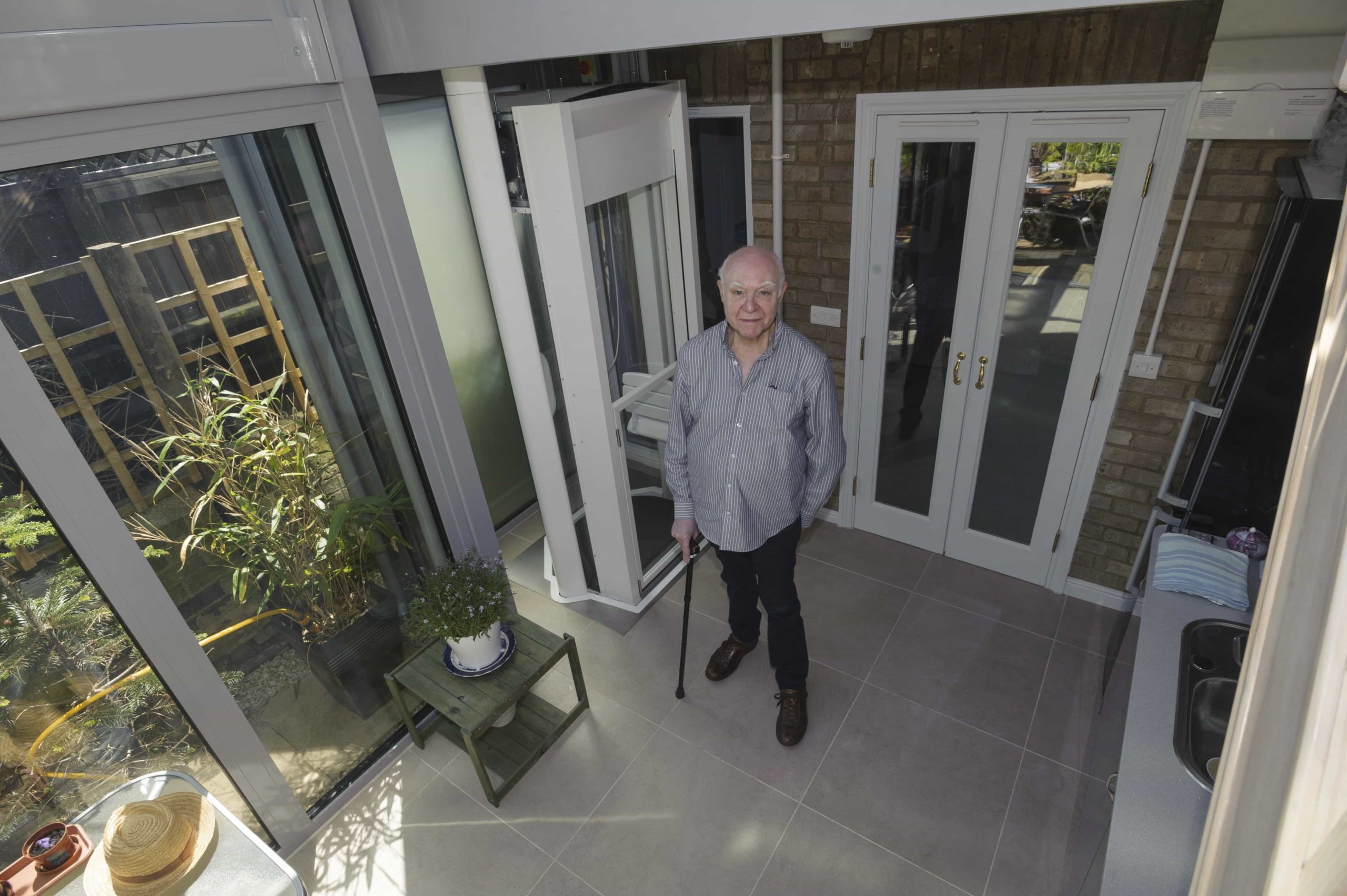Life-changing: Muscular dystrophy sufferer Christopher Knowles gets the lift he deserves
A Cambridge man who suffers from an extremely rare form of muscular dystrophy has discovered a ‘life-changing’ method of moving between the floors of his home following a lengthy but ultimately unsuccessful clinical trial to cure the disease.
Christopher Knowles, 70, suffers from Inclusion Body Myositis (IBM) – a slowly progressive muscle-wasting disease that mostly affects the arms and legs – and was diagnosed with the disease five years ago.
Watch Christopher Knowles’ video here
He was invited to take part in a clinical trial, along with 240 other people, set up by doctors at the National Hospital for Neurology and Neurosurgery in London. Believed to affect around four million people in Europe, doctors were hoping the drug trials would find a way to treat Inclusion Body Myositis by preventing enzymes in the body from attacking muscles.
Mr. Knowles had to travel to the hospital at Queen Square in Bloomsbury once a month to be infused and to undergo a wide range of tests including blood tests, weight testing, x-rays, heat scans, muscle testing, electrocardiograms (ECG) and more.
“The doctors at my local surgery had never come across anyone with Inclusion Body Myositis because it is so rare, so I had to see a lot of specialists,” said Mr. Knowles.
“After about a year, I was asked if I wanted to be involved in a clinical trial. It was tough because I had to go to London every month for two years and became a bit of a guinea pig but, of course, at the time it felt it was worth it because the doctors were trying to find a worldwide cure that would reverse the onset of the disease.
“They got very excited after the first round of tests as they showed positive results but, in the end, they said it wasn’t working and they didn’t want to continue because of the possible side effects.”
Symptoms of IBM initially include the progressive weakening of the wrist and finger muscles, the front thigh muscles and the muscles that lift the front of the foot. This meant that Mr. Knowles was finding the stairs in his two-bedroomed Victorian terrace home extremely difficult to manage.
Unusually, the two bedrooms were downstairs and the kitchen, living room and bathroom were upstairs so it was essential that Mr. Knowles could find a mobility solution to help him move between floors more easily. He had already decided against the idea of a stairlift after having been advised it was unsuitable for his needs.
“It was taking me for ever to get up the stairs and it was very painful,” said Mr. Knowles. “A stairlift was not suitable at all. I could probably get myself on the seat but would not be able to get myself up out of it. An occupational therapist said a stairlift was out of the question for someone with my condition.
“Lots of friends suggested I move house and I did look at the possibility of a bungalow but couldn’t bring myself to leave the home I’d lived in for more than 20 years. Also, I can’t drive anymore so I didn’t want to move out of the city. Because where I live is right in the centre, it’s easy for me to get to the shops. In the end, I decided I would get an extension built and get a Stiltz Home Lift fitted. I’d read great reviews about them on the internet.”
However, even though the extension plans were initially rejected following objections from neighbours, Cambridge City Council did finally granted Mr. Knowles permission one year later.
Mr. Knowles said: “It’s been a long road with the two years of clinical trials and then another year of battling to get planning permission, but my extension is finally finished and the Stiltz Home Lift is in place and it has been truly life-changing for me. I can access the upstairs of my home now at the touch of a button. The lift is also great for carrying things like bags of food shopping up to the kitchen, whereas before I would really struggle to get both them and me up the stairs.”
Mr Knowles chose the Stiltz Duo Vista Home Lift because he liked its contemporary look, it sits well with the extension, which resembles a conservatory. The lift car is manufactured from structural polycarbonate and its curved body is clear on all sides allowing natural light to flood in from the extension windows.
He added: “I liked the design of the Stiltz Duo Vista because it is transparent on all sides and didn’t in anyway look like an unattractive, square, disabled lift. It’s very stylish and will definitely add value to my home. I believe it would be a good selling point to a potential buyer even if they did not have a mobility issue, simply because it looks so great.
“I’m really glad to have found a product that has improved my life so dramatically and, I would say to anybody considering buying a Stiltz Home Lift, not to waste any more time and get on and buy one!”


